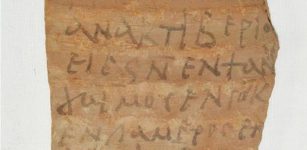On This Day In History: Walpurgis Night Celebration In Northern Europe – On Apr 30
AncientPages.com - Walpurgis Night is a traditional holiday celebrated on April 30 in northern Europe and Scandinavia.
This holiday symbolizes spring and has very ancient roots. It came to Sweden from Germany in the Middle Ages. In Sweden, typical holiday activities include singing traditional spring folk songs and lighting bonfires.
The name Valborg derives from the German Saint Sankta Walpurgis (Valborg), an Abbess (head of a nunnery) who lived during the 700s. Walpurgis Day is a consequence of Valborg being declared a saint on May 1.
In the old days, many believed May 1 was a magical night and the time of the Witches' Sabbath. It was said that witches flew on brooms and that all supernatural beings did things in the devil's company. People, therefore, lit large bonfires in the open air to protect themselves and keep witches and other sorcery at a distance.
It was also important to protect livestock from predators and magical powers.
In Carl von Linnaeus ' notebook from 1749, one can read the following:
"For it has been the custom of the farmer from Hedenhös to light fires on the ground the night before the day of the Valborg mass, to dance around it and devote himself to the coming summer, which is thus relics of the Floralia of the Ancients, which are only preserved in Uppland and the neighboring parishes, but hardly in other Swedish provinces." adition
Mainly in cities with colleges and universities, Valborg is celebrated extra solemnly. The students put on their student caps, and spring is celebrated with singing and speeches.
The Celts celebrated Beltaine (Beltane), Germans 'Manifest,' later renamed the Walpurgis night, Noc Walpurgii for Poles, Vappu for Finns, and Swedes - Valborgsnatten.
This feast is under different names and in various forms in most European countries.
In Germany, the holiday is celebrated by dressing in costumes, playing pranks on people, and creating loud noises to keep evil at bay.
Many people also hang blessed sprigs of foliage from houses and barns to ward off evil spirits or leave pieces of bread spread with butter and honey as offerings for phantom hounds.
In Finland, Walpurgis Night and May Day are effectively merged into a celebration called Vappu, among the country's most important holidays. Initially, Walpurgis Night was celebrated by the Finnish upper class.
Then, in the late 19th century, students (most notably engineering students) took up its celebration.
The origin of the holiday dates back to pagan celebrations of fertility rites and the coming of spring. After the Norse were Christianized, the pagan celebration was combined with the legend of St.Walburga, an English-born nun who lived at Heidenheim monastery in Germany.
She later became the abbess there.
Walburga was believed to have cured the illnesses of many residents. Walburga is traditionally associated with May 1, her remains from their burial place to a church circa 870, and she was canonized.
Although the date of her canonization is likely purely coincidental to the date of the pagan celebrations of spring, people could celebrate both events under church law without fear of reprisal.
AncientPages.com






















